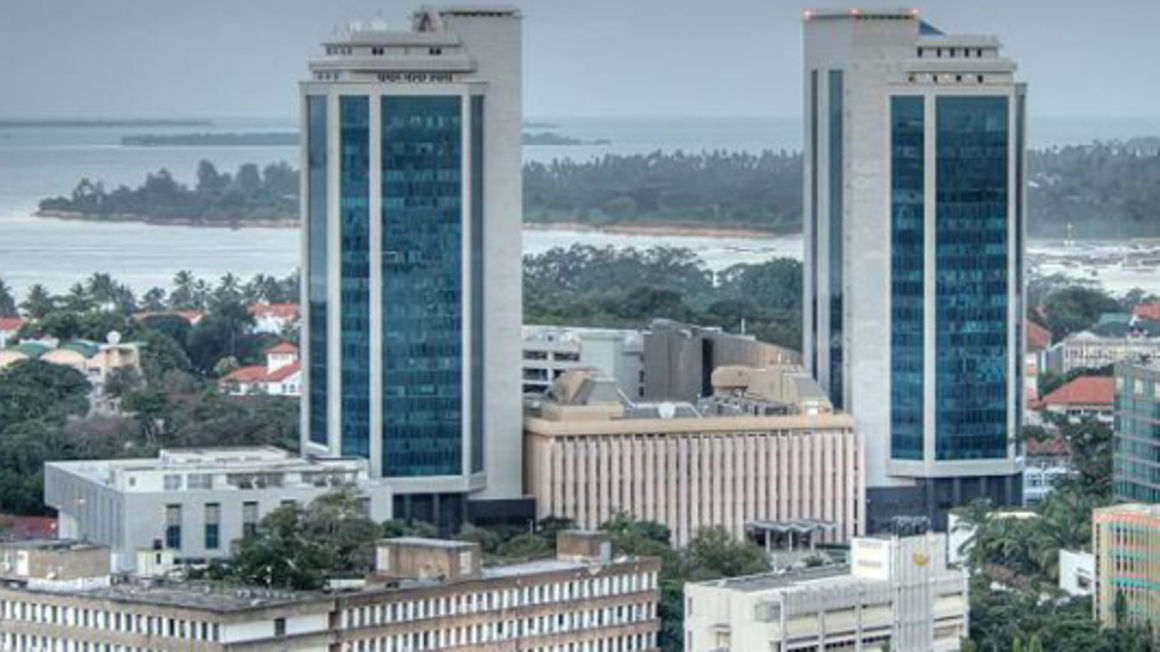
The Bank of Tanzania headquarters. PHOTO | FILE
Dar es Salaam. The Bank of Tanzania (BoT) has exuded confidence that economic growth targets will be realised even as Covid-19 effects posed challenges across the globe.
Last year, Tanzania revised its growth targets from 6.9 percent to 5.5 percent following the pandemic which disrupted world economic activities. However, the central bank’s monetary policy committee says the 2020 targets will be realised.
According to the committee statement posted on the BoT website, the gross domestic product (GDP) is expected to grow by six percent or more in 2021.
“The Monetary Policy Committee observed that since its previous meeting, the economy continued to demonstrate satisfactory performance despite global spillover effects of Covid-19. In the first half of 2020, growth averaged 4.9 percent, largely driven by construction, agriculture, transport and mining, and quarrying,” stated the committee.
The economy grew by 5.7 percent in the first quarter of 2020, 4.0 percent in the second quarter and 4.5 percent in the third quarter, according to the National Bureau of Statistics (NBS).
Going with the statistics of the three quarters, Tanzania’s economic growth averaged 4.73 percent in nine months as the growth of the fourth quarter is yet to be released.
Mathematically, if Tanzania is to attain its 5.5 average growth for 2020, growth of the fourth quarter alone must be at least 7.8 percent.
Economists say Tanzania’s growth prospects are positive, but will somewhat depend on external factors such as the global economic growth, trend in the second wave of Covid-19 and weather.
“These external variables are important because Tanzania is trading a lot with the rest of the world,” said Prof Honest Ngowi of the Mzumbe University.
“Although Tanzania has no cases of the coronavirus, the impact of the disease’s second wave will definitely affect Tanzania because of the travel restrictions which hinder trading,” he added.
Weather issues matter for Tanzania economy because agriculture sector, which accounted for 28.9 percent of the GDP, depends much on weather.
During the third quarter (July to September 2020), construction activities recorded the highest growth of 17.4 percent, followed by transport and storage (8.8 percent), information and communication (8.7 percent), professional scientific and technical services (8.6 percent), water supply (7.9 percent), administrative support services (7.7 percent), agriculture (6.7 percent), public administration (6.6 percent) and human health and social services (6.4 percent).
Other economic indicators
The
monetary policy committee stated that external sector sustained
satisfactory performance, supported by exports, particularly gold,
crops, and manufactured goods.
The committee said foreign reserves
remained adequate, covering more than 5.6 months of imports. The
performance of government fiscal operations was also on track, with
improving tax revenue.
The MPC noted that implementation of
accommodative monetary policy succeeded in lowering short-term interest
rates, thus creating favourable conditions for increase in trade and
investment.
Private sector credit growth averaged 5.1 percent in the
last six months of 2020, and according to the team, it is expected to
regain momentum in the second half of the 2020/21 financial year as the
global economy normalises.
Inflation is expected to remain within the projected level of 3-5 percent while the exchange rate is expected to remain stable.





No comments :
Post a Comment